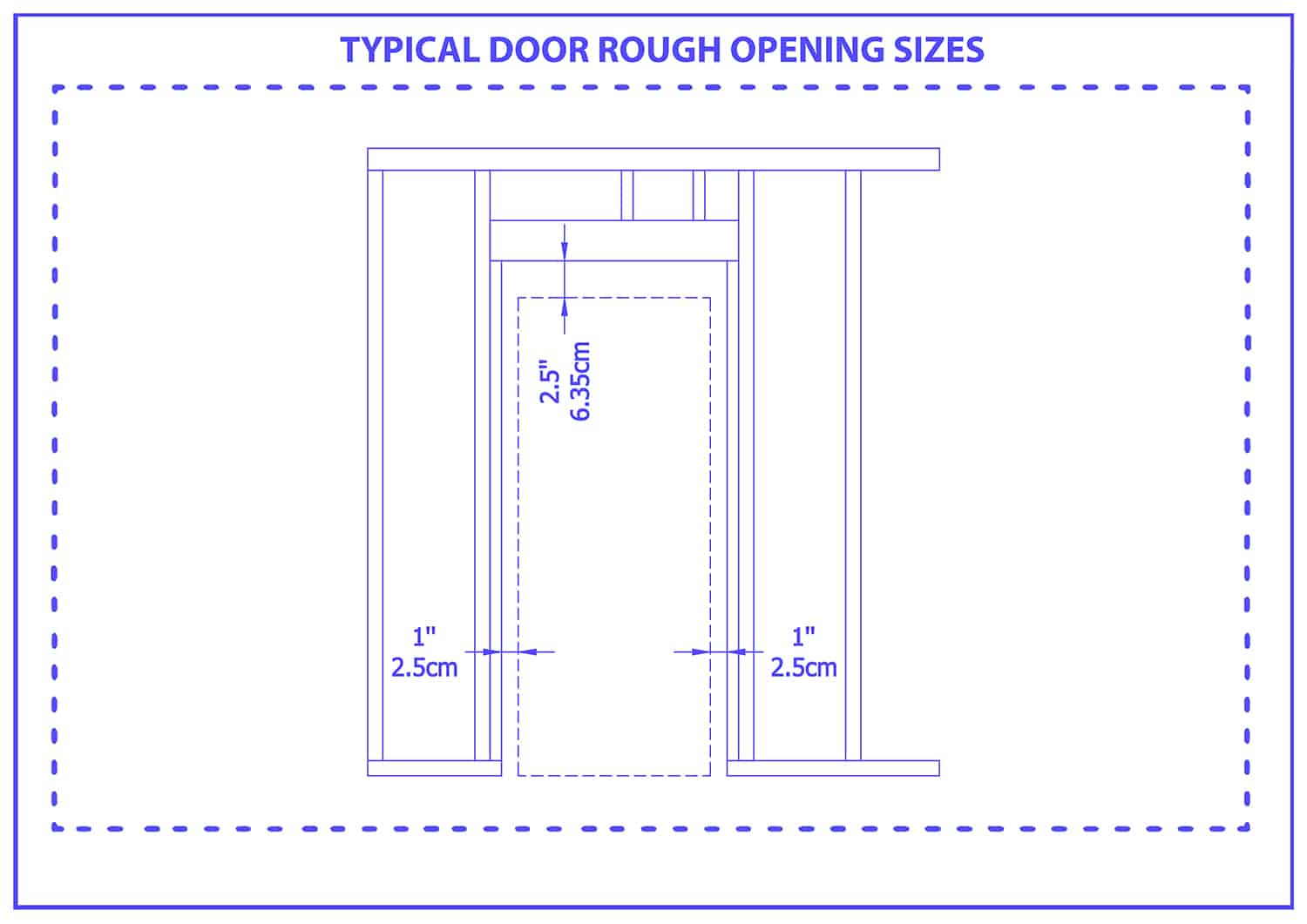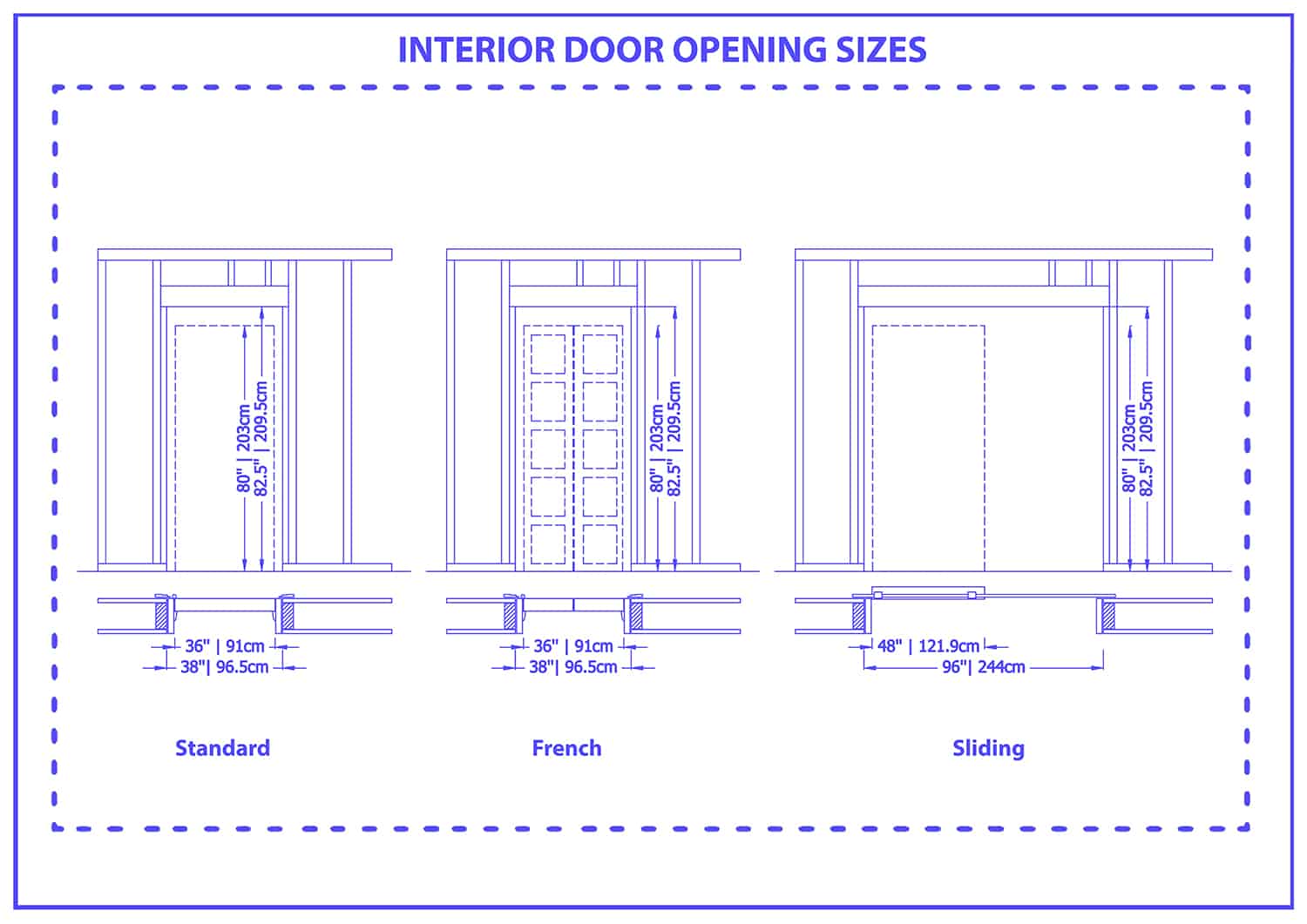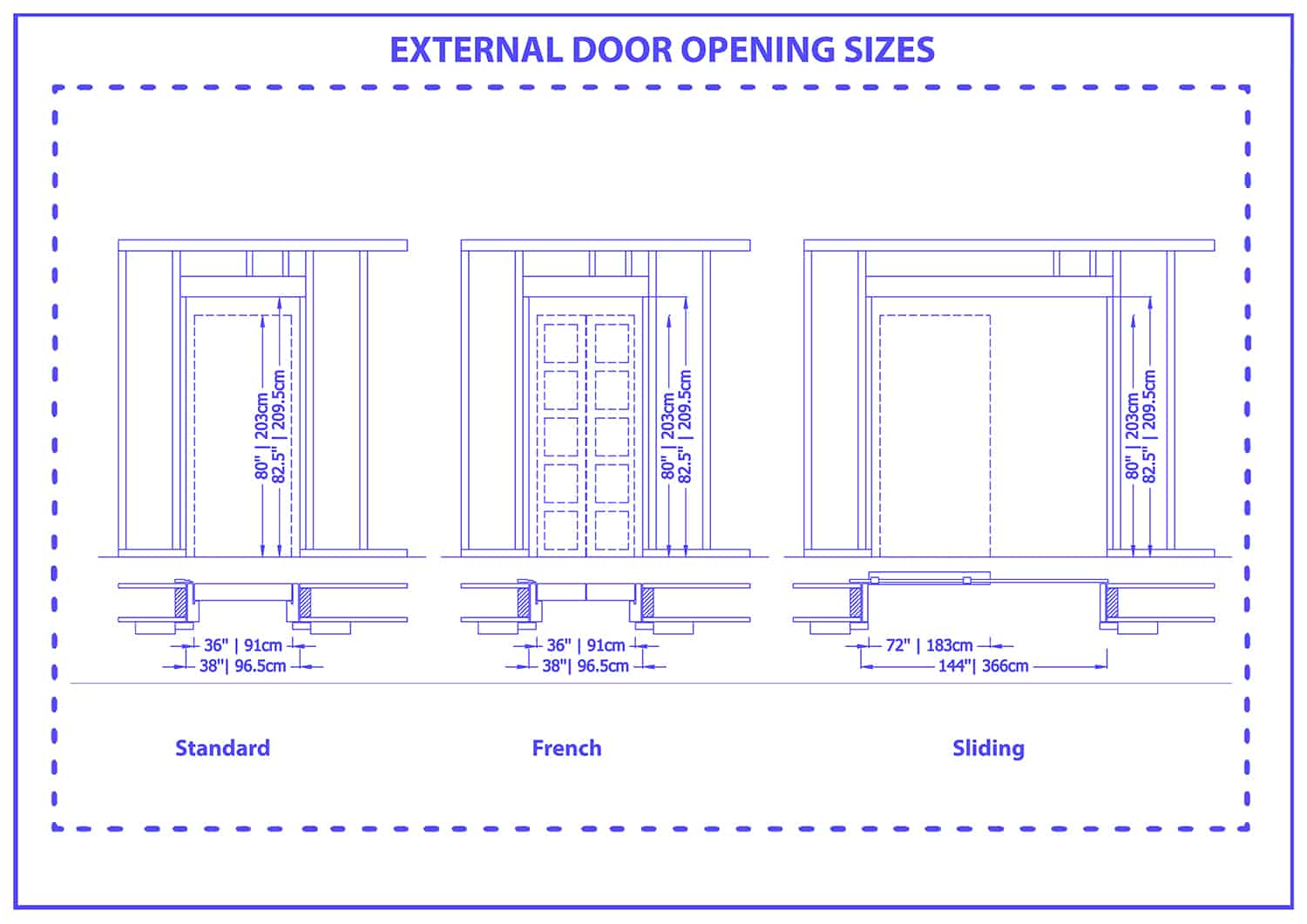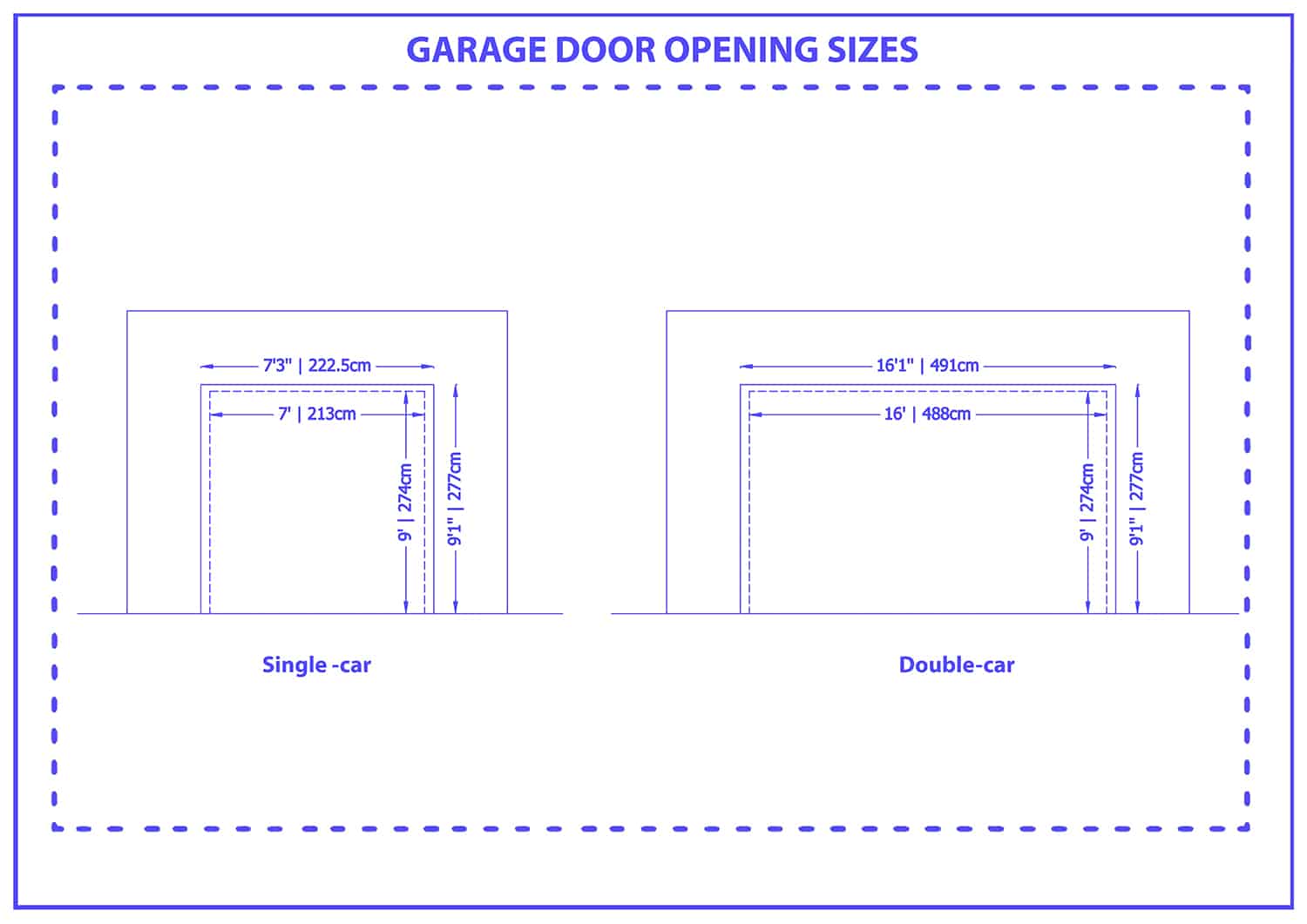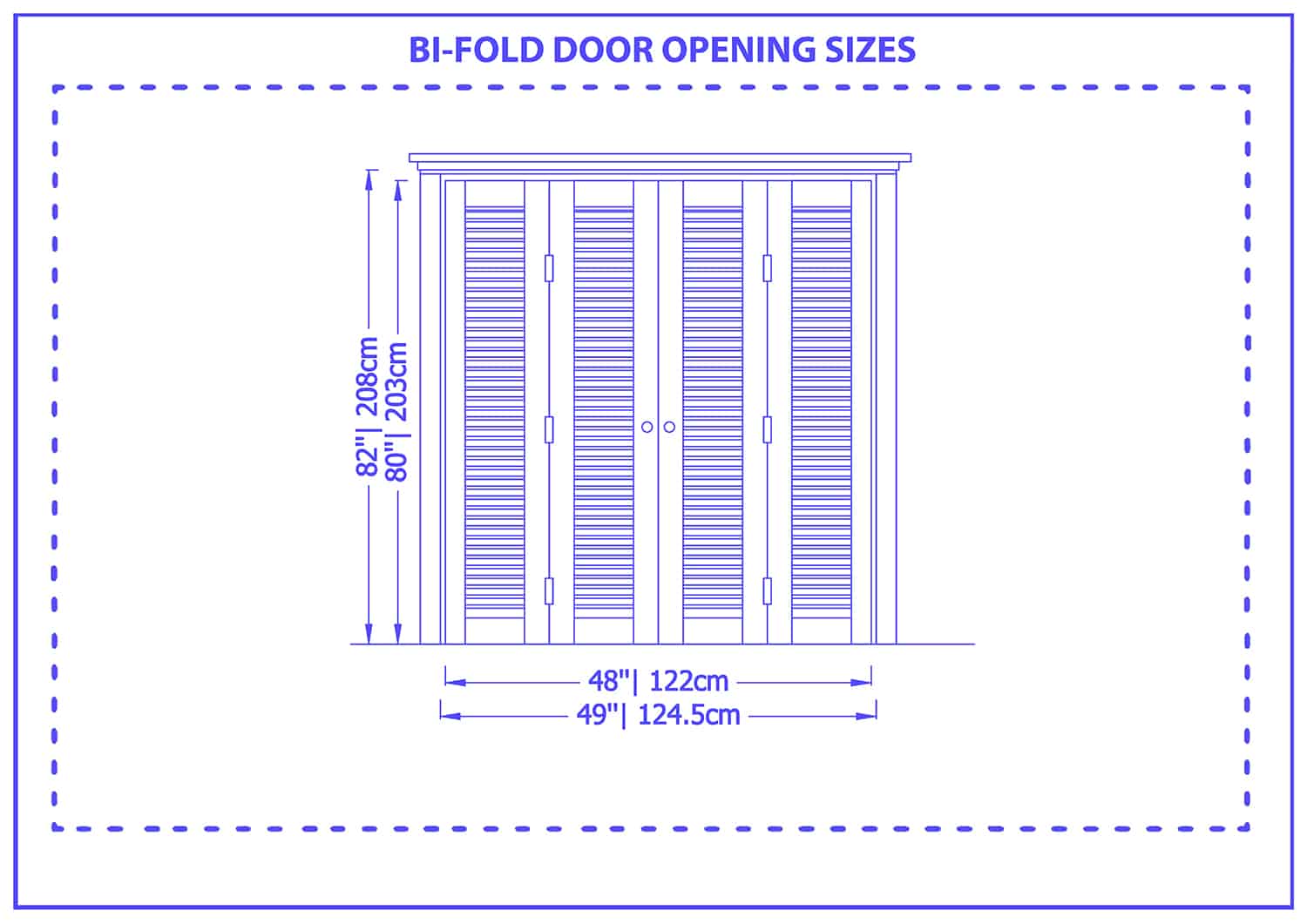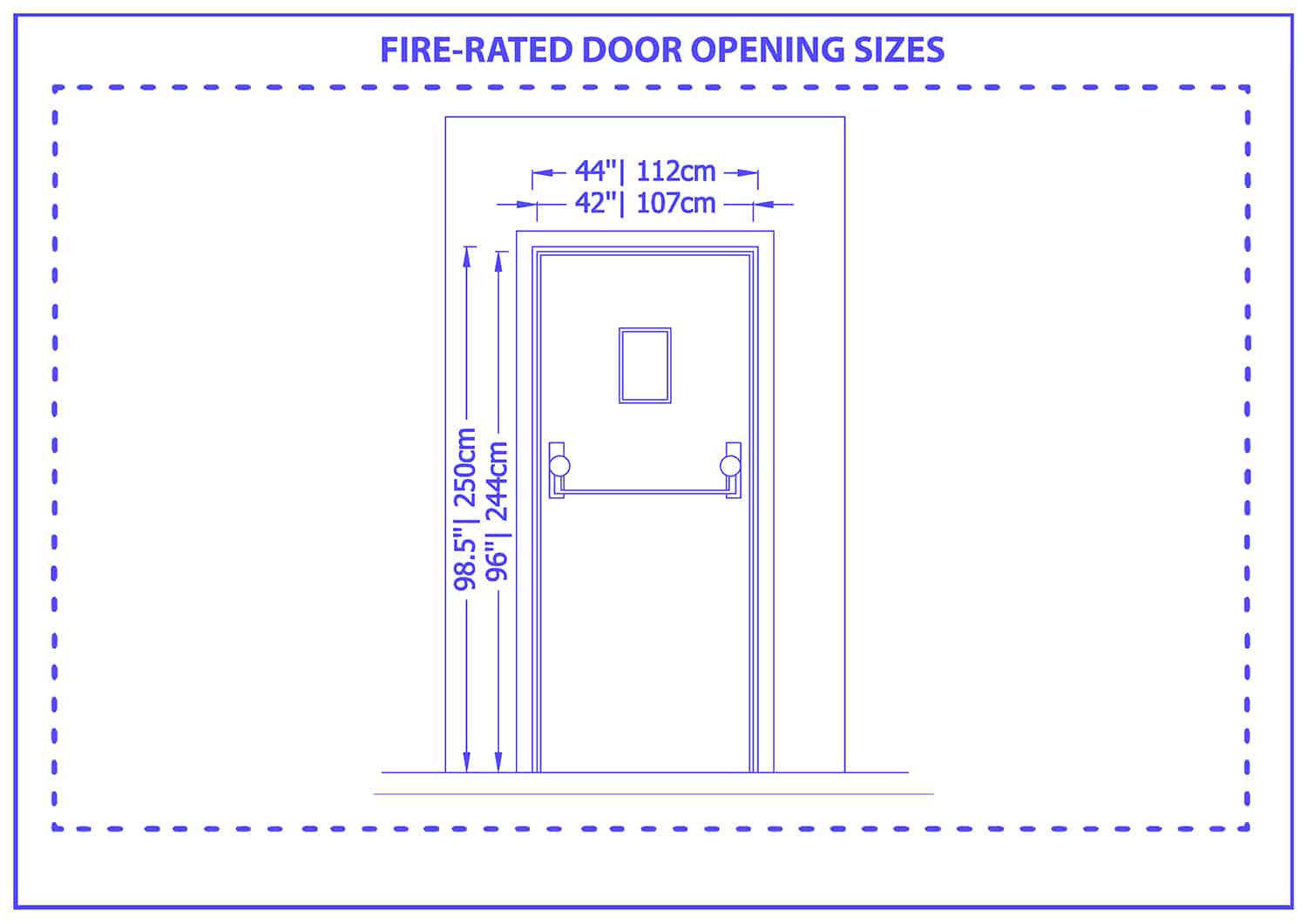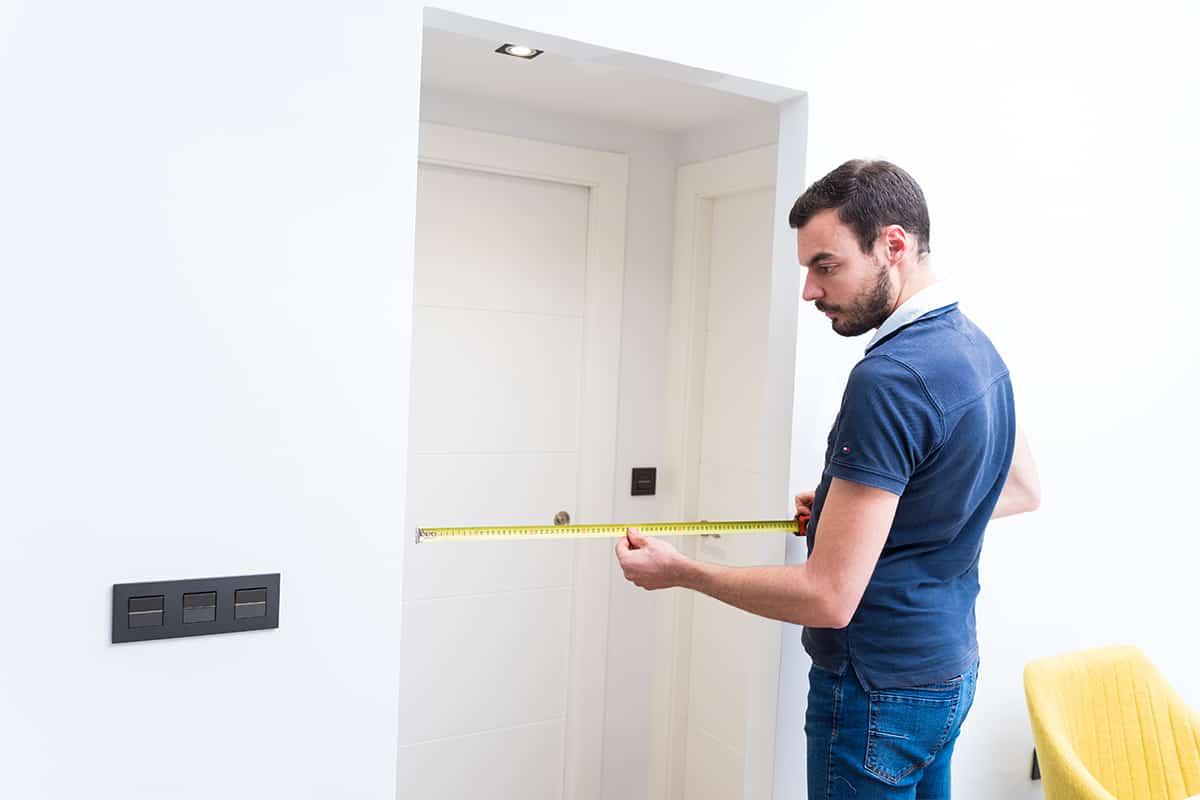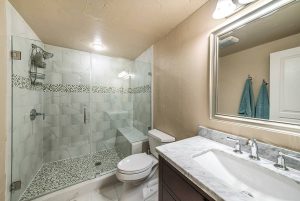A door’s rough opening size is the foundational dimension used to frame the space where the door, its frame, and hardware will be installed. It ensures that the door fits snugly and operates smoothly, greatly impacting your home’s overall functionality and aesthetic appeal.
Door rough opening sizes are typically 2 inches wider and 2.5 inches taller than the door size. For instance, the rough opening for a 36 × 80-inch door should be 38 × 82.5 inches.
In this comprehensive guide, we will delve deeper into the world of door rough openings. We’ll explore the varying sizes for different door types, from interior to exterior doors, and how to measure door rough openings.
Types of Doors and Their Standard Rough Opening Sizes
Installing a door in your home is a lot like finding the perfect outfit—it has to fit right. Different types of doors have different standard rough opening sizes.
Interior Doors
Interior doors separate rooms within your home, providing privacy and reducing noise transfer.
- Standard Interior Doors: The most common sizes for interior doors are 24, 28, 30, 32, and 36 inches in width, with a standard height of 80 inches. The rough opening size should be 2 inches wider and 2.5 inches taller than the door size. For a 36 × 80-inch door, the rough opening size would be 38 × 82.5 inches.
- French Interior Doors: French doors are double doors with glass panes extending for most of their length. They usually come in pairs and open from the center. The rough opening for a 36 × 80-inch set of French doors should be 38 × 82.5 inches. For individual door panels, follow the rough opening sizing rule for standard interior doors.
- Sliding Interior Doors: Unlike hinged doors, sliding doors require a rough opening width that’s twice the door width and 2.5 inches taller than the door height. Therefore, for a 48 × 80-inch sliding door, the rough opening should be 96 × 82.5 inches.
Exterior Doors
Exterior doors provide security and insulation, keeping out the elements while adding to your home’s curb appeal.
- Entry Doors: These doors are typically 36 inches wide and 80 inches tall. The standard rough opening size for a 36 × 80-inch entry door would be 38 × 82.5 inches.
- French Exterior Doors: Similar to their interior counterparts, exterior French doors open from the center. Each door panel’s rough opening size follows the standard door sizing rule. For a pair, add the widths of both doors and calculate the rough opening size.
- Sliding Patio Doors: These doors are usually wider to provide a larger view and passage to your outdoor living space. For a 72 × 80-inch sliding patio door, the rough opening size should be 144 × 82.5 inches.
Garage Doors
Garage doors are larger and require a more spacious rough opening. A standard single-car garage door is 9 feet wide and 7 feet tall, requiring a rough opening of 9 feet 1 inch by 7 feet 3 inches. A double-car garage door is 16 feet wide with the same height, needing a rough opening of 16 feet 1 inch by 7 feet 3 inches.
Pocket Doors
Pocket doors disappear into a compartment (pocket) in the adjacent wall when opened. These doors need a rough opening that’s twice the width and 2.5 inches taller than the door. For example, a 32 × 80-inch pocket door requires a rough opening of 64 × 82.5 inches.
Bi-fold Doors
Bi-fold doors are often used for closets and pantries. Each door panel folds onto the other, requiring less clearance than a standard door. For a 48 × 80-inch bi-fold door, the rough opening should be 49 × 82 inches. This accounts for the track and hardware at the top of the door.
Fire-Rated Doors
Fire-rated doors help prevent the spread of fire and smoke. These doors are usually heavier and require a precise fit. For a standard 42 × 96-inch fire-rated door, the rough opening should be 44 × 98.5 inches. It’s crucial to consult local building codes for fire door requirements, as this could vary.
Step-by-Step Guide to Measuring Door Rough Opening Sizes
When installing a new door, one of the most crucial steps is to accurately measure the rough opening. This will ensure a proper fit and smooth operation of your door. Here’s a step-by-step guide to make this task easier.
Tools Required
Proper measurement of a door’s rough opening requires a few essential tools:
- Tape Measure: A reliable, easy-to-read tape measure is indispensable for precise measurements.
- Carpenter’s Level: This tool is crucial to ensure your door’s rough opening is level and plumb.
- Notepad and Pen: To record the measurements.
Process of Measuring Rough Openings
Here’s how to accurately measure your door’s rough opening:
- Measure the Width: Measure the horizontal distance across the rough opening at the top, middle, and bottom. Use the smallest of these three measurements as your rough opening width. This measurement is from stud to stud, not edge to edge.
- Measure the Height: Measure vertically from the top of the rough opening to the floor in two places: the left and right sides. Use the smallest of these two measurements as your rough opening height. For accurate measurement, ensure the floor is level where the bottom of the door will rest.
- Check for Squareness: Measure diagonally from one corner to the other in both directions. If the measurements are equal, the rough opening is square. A square opening is crucial for the door to hang correctly.
- Check for Plumb: Use the carpenter’s level to check if the sides of the rough opening are plumb (vertically straight). If the bubble is centered, the opening is plumb.
- Record the Measurements: Note down the measurements – width by height. For instance, if the width is 38 inches and the height is 82.5 inches, your rough opening size is 38×82.5 inches.
Tips for Accurate Measurement
- When taking width measurements, be sure to measure from the surface of the studs, not from any drywall or other wall coverings.
- If you’re planning to install a pre-hung door (a door that comes already hanging in its frame), remember to include the door frame in your rough opening measurements.
- For floors that are not level, measure from the highest point of the floor to ensure enough clearance for the door.
- If you’re replacing an existing door, measure the door and its frame, not just the door. You should also measure the existing rough opening after removing the old door and frame.

